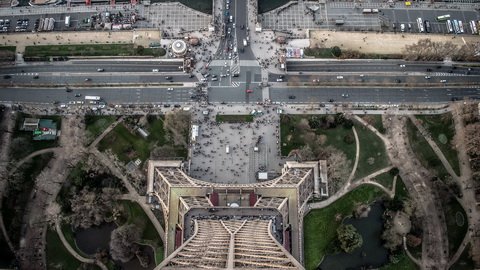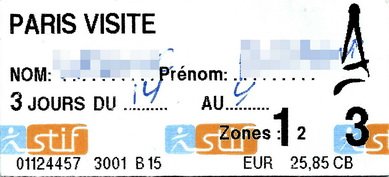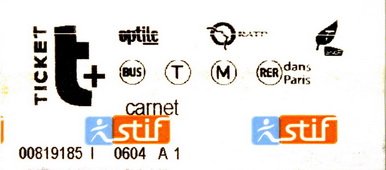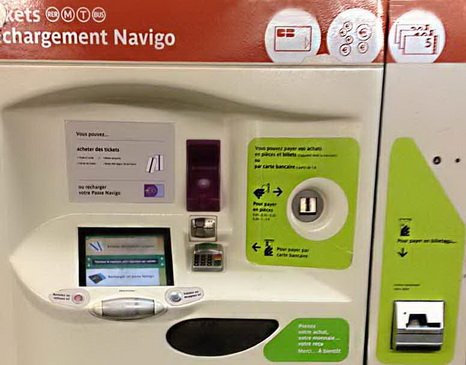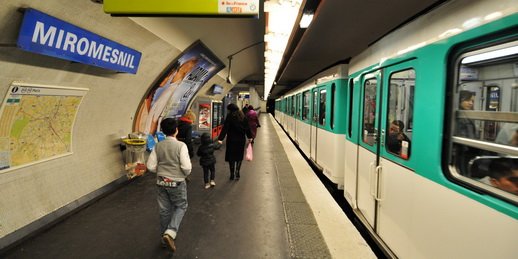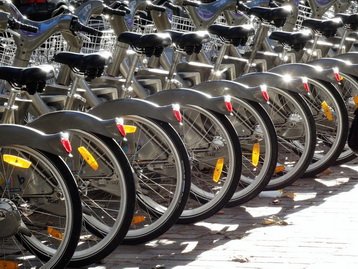I
t is natural that a place of so many tourist attractions, such a vast history, and a few important artifacts, is well prepared to show it to people. Not to mention that only within the city limits there are 2 million people, with 10 more arriving at their jobs from the various corners of Ile de France.
Paris is not a skyscraper city. Its historical center, having the river Seine running through it, has low tenements of a few floors high. Buildings grow slowly and in certain parts of the town. The circular fast road surrounds the public zones 1 and two – it is called Peripherique. It serves as an indispensable means of transport for many. More residential and business parts can be seen after crossing it. But it is nowhere close to reaching the sky. Parisian people like their space, the beauty of their homes, and the style of their capital.
It means that crossing this vastness and the distances require a lot from public transport. Parisian metro is one of the finest when it comes to connecting places. Busses are less popular among tourists, but their network is impressive. There are also bicycle stations if you fancy a ride along the river, boats which are mostly there for pleasure and of course – your feet! 80% of Parisian tourist attraction are next to each (especially along the river from Eiffel Tower to Notre Dame). It is the utmost pleasure to go for a walk while admiring them.
This means that Paris needs some planning. Either you like walking or you will only use the metro to get to your hotel. Or you want to see the most and fast, without straining your legs – it is where the transport tickets come in handy. There are possibilities for both, and this article will help you decide.
Useful links for a start:
Paris Visite
Let us start with big packages. Paris Visite is a ticket for all the public transport of Paris and Ile de France. This means you can travel within the city and further to places like the Palace of Versaille. On your disposition are metro, RER, buses, trams, and SNCF Transilien (trains).
What is the most important – it includes the rides to the airports! And comes in two zone-options.
You can buy a smaller one, for zone 1-3 which have the Orly airport included in it. This one covers all the main attractions without the Versailles Palace and Disneyland.
The bigger ticket is for the Ile the Paris – zones 1-5, so Paris and the suburbs. You have both airports in it, Versaille and Disneyland, or the Exposition Park in Villepinte.
Each ticket comes with some interesting reductions for the entrance tickets to other attractions in the city.
Prices for zone 1-3
1 day – 12€
2 days – 19,50€
3 days – 26,65€
5 days – 38,35€
Prices for zone 1-5
1 day – 25,25€
2 days – 38,35€
3 days – 53,75€
5 days – 65,80€
*Must be 2-5 consecutive days
*Children pay half the price. Age 4-12 (not finished) (younger travel free)
The day starts and ends at 5.30 AM. It is so because the public transport starts to operate from 5.30 AM and runs until 00.30 (in the most general hours).
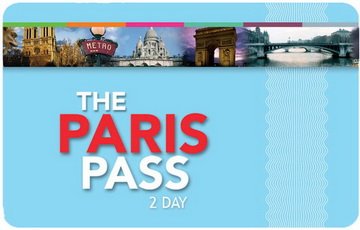
Transport and attractions cards
Every major city has one and there are many options in Paris. You can buy attractions cards with or without public transport, but for the sake of the article – you have two possibilities. One pass is called Paris PassLib’ and the other is Paris Pass (not to mix with Paris Museum Pass – this one gives only entrances to the monuments).
They are both for multiple days, starting with 2 and finishing with 6. You can travel with any public transport but within zones 1-3. This means that you will need a separate ticket to de Gaulle airport and to the Palace of Versailles.
The prices start at 130€ and go up from there. You can read more about them here (coming soon).
T+ tickets and Mobilis
This is one family of RAPT tickets, which means they cover all of the public transport in Paris: busses, MTR/RER, and Trams.
T+ tickets are single tickets that allow you to travel ONLY within zone 1 of the city. This covers most of the attractions, but e.g. to get to La Defence you will need a separate point-to-point ticket. If you look at the map you will see a crème color square in the middle – this is the first zone. It is quite extensive.
In regard to the busses and trams – you are allowed to one single journey. The MTR/RER lines on the other hand are linked together and you can switch between them. In the case of the MTR to RER switch, it would mean that you will have to go through the gates twice – but the ticket will work (remember not to throw it away). You cannot switch between MTR/RER and busses/trams. The idea is simple – once you leave the underground, you throw the ticket out.
The price calculator is quite easy – each zone requires a separate t+ ticket. This means that for zone one it is 1,90€, for zone 1-2 it is 3,80€, zone 1-3 is 5,70€, and so on.
It is most affordable to buy a T+ ticket in the bundles of 10 – you get a 25% reduction in price then. The rest depends on you and on how much you will travel using the Parisian network.
Where to buy them?
All tickets can be bought at the metro stations – either at the counter or with the automatic machines. Big bus and tram stations also offer the same options.
Bus drivers also offer single tickets, so there is no need to worry that there is no automatic machine at the bus stop.
Mobilis is the further extension – a day ticket, which can be bought for 2 adjacent zones (minimum) or more. In this case, you do not buy a multiple day ticket – this is what the Paris Visite is for. But if you know that you will have a day, when you will travel a lot – you can plan it and buy the right thing for you.
In this case, the ticket starts at midnight and lasts for 24h. It doesn’t matter if you start at 9 AM or 14 PM – in both cases Mobilis will stop to be valid at midnight.
Prices
Ticket T+ (single journey) – 1,90€
Point-to-point – 1,90€ for every zone crossed
Mobilis
2 zones – 7,50€
3 zones – 10€
4 zones – 12,40€
5 zones – 17,80€
Metro
The Parisian underground train system is the third oldest in Europe. It connects over 300 stations and has over 300km of lines. You have 16 lines of the metro of different colors and 5 lines of the rapid RER (map of all the network).
It covers 5 zones that the city was divided into. They grow in a circular manner from the center of the town, as far as the Palace of Versailles and Disneyland. They are also connected to the train stations where you can interchange for the SNCF network and travel even further away.
Some people laugh that below Paris there is an underground city. You can feel it the most when you succumb to the depths of Cité or Abbesses MTR stations. Some of them are art or covered with art – like Louvre stop, Concorde declaration of human right letter tiles, frescoes in Bastille, or money in Pont Neuf. Even the entrances to the station have become famous over the years!
It is also overwhelming, especially for those feeling the pains of the French language. Just remember that you always need to know the name of the last station. Keep a map with you a note or a photo of it as you follow the corridors.
 Metro is number/letter and color-coded as well. With these two pieces of information, you can safely arrive close to the platforms where you will decide whether to go left or right. Then – count the stations. It is the safest way since many lines in Paris do not have the blinking light showing where you are (120 years of age is the culprit…maybe).
Metro is number/letter and color-coded as well. With these two pieces of information, you can safely arrive close to the platforms where you will decide whether to go left or right. Then – count the stations. It is the safest way since many lines in Paris do not have the blinking light showing where you are (120 years of age is the culprit…maybe).
The trains and corridors offer you a rare occasion to listen to the musicians. They come and go and flourish… staying underground for a few hours per day. And people always give them something, especially tourists. Somehow, they create the atmosphere of the city.
But then… the metro can be quite crowded in some hours and it is difficult to squeeze your way into it. It is famous for its pickpocketers – so be careful and keep your valuables in a safe place. What is more – some stations have screens with automatic doors. Somehow, they tend to close fast, so be quick entering the train.
 A word of advice for those who tend to get confused easier. Avoid big stations with multiple interconnections, like Chatelet. There is always another way to interchange. What is more, it is sometimes easier to walk a short distance to a monument, than to travel through the labyrinth of corridors looking for the right way out.
A word of advice for those who tend to get confused easier. Avoid big stations with multiple interconnections, like Chatelet. There is always another way to interchange. What is more, it is sometimes easier to walk a short distance to a monument, than to travel through the labyrinth of corridors looking for the right way out.
Buses and Trams
Those are both joy and disaster. Joy – because you can see the city!… but then the traffic of the capital sometimes makes you cry. The network is extensive, what you can see on the map, and quite convenient. They are also cheap – one bus is one ticket (except for traffic and some night lines).
Because of this please remember – the single ticket T+ works for a single line only and for the duration of 90 minutes.
You usually stamp the ticket inside the bus. Without it, it is not validated, and you can get a ticket if a controller stumbles in your way.
If you have some Paris Pass/other tickets, always show it to the bus driver, or enter through the front door.
Bicycles
City bicycle stations are put everywhere in the major cities. They may be a part of the green revolution, but at the same time create a great opportunity for the tourists.
Velib could have been created for the students and the Parisians, but it works for everyone. Unlike other places where you need some sort of citizenship proof, here you just need to go online, pay with your credit card, receive a code, and enjoy.
There are options for the residents, you can even get the Velib membership card. But for us, tourists it is mostly a 1 or 7-day pass – paying online and inputting the code is so easy.
The first 15 minutes are free and then… easy! You go where you want, and you put the bike back to one of the numerous stations located in the city.

